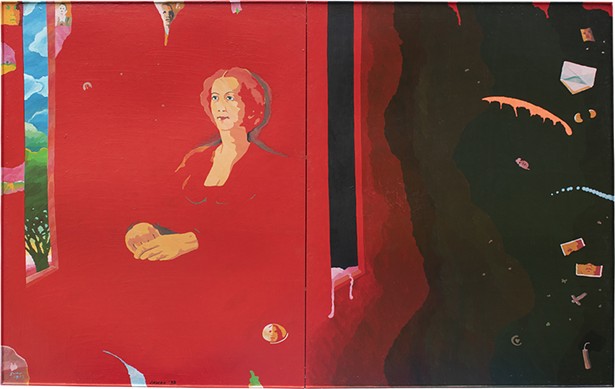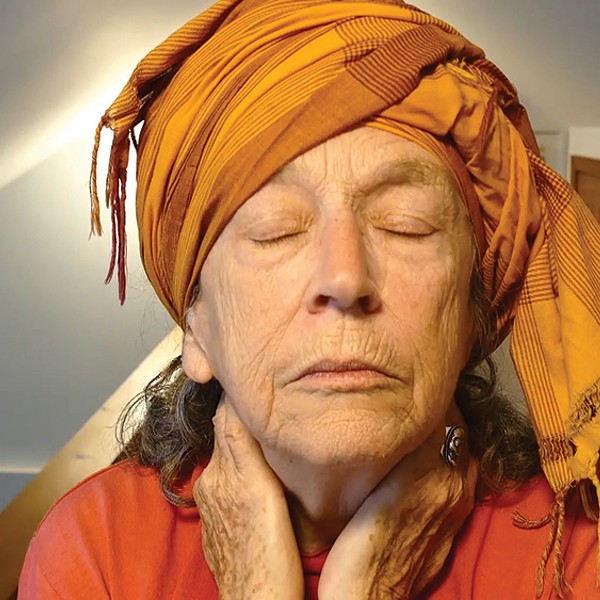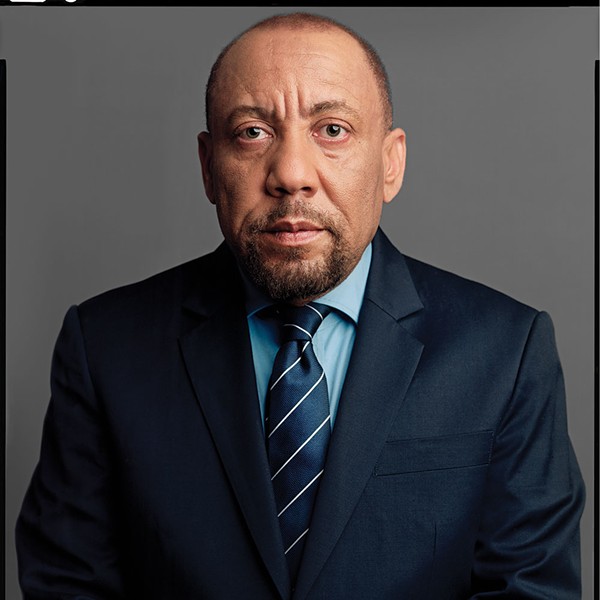"Jan Sawka: The Place of Memory (The Memory of Place)," which opens February 8, is the second retrospective of the Polish-born artist's work to be held at SUNY New Paltz. The first was in 1989, and resulted after Sawka, who lived in High Falls, had met Neil Trager, director of the college's art gallery. The exhibition was fortuitous for all involved: through Trager, Sawka met New York art gallery owner Samuel Dorsky, who subsequently represented him; Dorsky got to meet Sawka's famous client, Jerry Garcia (Sawka designed monumental stage sets for the Grateful Dead's 25th anniversary tour); and the success of the exhibition helped spearhead Trager's initiative for an art museum, whose construction was made possible by a generous donation from Dorsky.
Dorsky died in 1994, Trager retired from the museum in 2008, and Sawka tragically passed away in 2012 at age 65. But the artist's powerful legacy, here celebrated in the institution it helped foster, lives on: the 46 paintings and drypoint etchings in "The Place of Memory," augmented by posters along with silkscreen prints, photographs, and various memorabilia, are as fresh and mind-bending as when they were made. Indeed, in this era of mass propaganda masquerading as news, viral social-media conspiracy theories, and AI applications for citizen surveillance, Sawka's complex, convention-bending art continues to resonate. Its appealing, eye-catching graphic style combining brilliant color with nuanced grays draws you in—and then mystifies, confounds, and delights with its labyrinth of double meanings and elegiac undercurrents.
Sawka was an art star who had won a prestigious award from the President of France when he was expelled from Poland in 1976. He had been active in the Polish underground art scene, designing sets, illustrating books, and arranging happenings, and gained renown for his posters, which were the only official creative vehicle for visual artists under Poland's repressive government (as a purely visual medium, they were also an ingenious way to express subversive ideas). Ultimately, Sawka was unable to evade the censors and was exiled to France, where he became artist in residence at the Pompidou Center before moving with his wife and infant daughter to New York in 1977. He did illustrations for the New York Times, exhibited his paintings and sculptures, designed theater sets, and toward the end of his life designed massive installations for rock groups as well as governments; as artist in residence for the cultural ministry to Japan, he designed "The Tower of Light Cultural Complex" for Abu Dhabi, UAE, utilizing Smartglass technology.
As the name connotes, "Place of Memory" features work that's meditative in tone and, in some cases, focused on loss. Its centerpiece is Ashokan 1-4, a series of four enormous triptychs depicting the dark waters of the reservoir. Each is edged along the top by a narrow band representing the surrounding landforms, which are silhouetted against the wall—standing in for the sky—and connote the submergence of the panels in water. Along the top center, a glowing, rising sun successively progresses in each panel through a construction of small white boxes. The vast, reflective surface of the reservoir is consonant with the plane of the triptych, which is covered with a scrim of hieroglyphic-like, indecipherable text and tiny images of faces, figures, trees, and the like. With its inscribed surface and transparent depths, the reservoir is a palimpsest, a theater of memory, symbolic of consciousness and the drift of its endless ruminations; in the piece's cosmic scale, intricate, coded text, and shape-shifting qualities, it evokes the imaginative scope and Surrealist logic of the stories of Borges.
"The place of memory within the human consciousness is the theme of the show," says Frank Boyer, a professor of art criticism at SUNY New Paltz who curated the show with Sawka's daughter, Hanna Sawka, was a friend of the artist and has studied Polish contemporary culture for the past 30 years. "It's about how the memory of a place operates for the exile—and for everyone. Jan was focused on people finding themselves in the reflections of his artwork. He had something to say, but he strongly invited the viewer to participate."
Another large-scale work, Asbury's Notebook, inspired by a trip Sawka and his wife and daughter took to Asbury Park back when it was a decrepit and forlorn place, reminiscent of the resorts of post-war Poland, is bordered along the bottom edge by clustered buildings and telephone poles silhouetted against the fiery afterglow. Here the surface plane consists mostly of darkened sky, in which dozens of tiny scenes and symbols are suspended like rows of heraldic shields. In Letter No. Three, which commemorates a theater in Krakow that had burned down, seven panels, whose symmetrical, hierarchical arrangement, from the smaller panels at the ends to the large central one, suggests a Medieval altarpiece, are covered with discrete, tiny images, a cacophony of memories comprising a memorial.
Sawka's technique of mixing acrylic paint with ink and his use of nuanced grays, which recalls the poor-quality printing of magazines in Poland (an Iron Curtain equivalent of Warhol's sloppy machine), amplified by his juxtaposition of letters with figurative imagery, infuses the works with ambiguity, as if they were prints, not paintings—documents vulnerable to the passage of time. This contrasts with his use of bright reds and oranges, which in some instances conveys the sublime effects of the sunrise or sunset and in others, a sinister, destructive force (as is the case in Intrusion, in which a tongue-like shape of bright red successively invades the three panels of gray sky, which are filled with ghostly, tomb-like symbols and figures; according to Boyer, the poisonous plume alludes to the industrial, heavily polluted region of Poland where Sawka was raised.)
Also of note is 36 Post-Cards, which consists of 20-x-25-inch identically sized drypoint etchings, each hand colored with watercolor and bearing the word "post card" wittily integrated into the visual design. Each is accompanied by a text extracted from a recently discovered letter Sawka wrote to the curator of the Poster and Prints Division of the Library of Congress, which owned many of his works; the letter, written at the request of the curator, describes each scene. The texts are illuminating in that they reflect Sawka's wide-ranging travels as well as his connection to his native country. "We thought one of the paintings depicted the Hudson River, but it turned out be a tiny Polish river at flood-tide," notes Hanna.
"Jan Sawka: The Place of Memory (The Memory of Place)," runs February 8 through July 12 at the Dorsky Museum. On March 28 and 29 at 2pm, the Dorsky, the Kosciuszko Foundation and the Polish Cultural Institute will host a symposium on Sawka's work featuring the curators; scholars Peter Schwenger, Tom Wolf, Beth Wilson; and others. The symposium will take place at the Dorsky on March 28 and the Kosciuszko Foundation, located at 15 East 65th Street, in New York City, on March 29. A parallel exhibit, "Golden West? Jan Sawka's California Dream," will open on February 1 at the Robert and Frances Fullerton Museum of Art at California State San Bernardino. Newpaltz.edu/museum


















